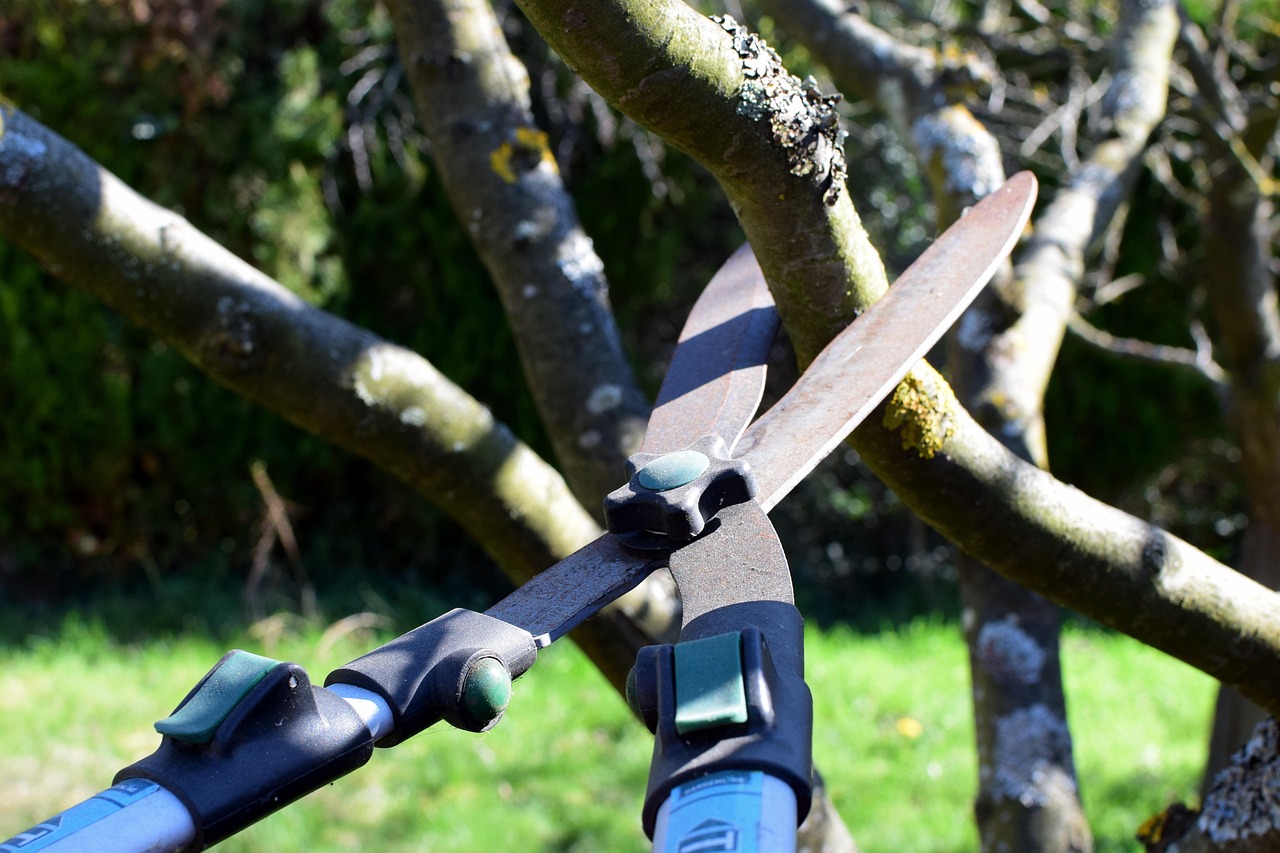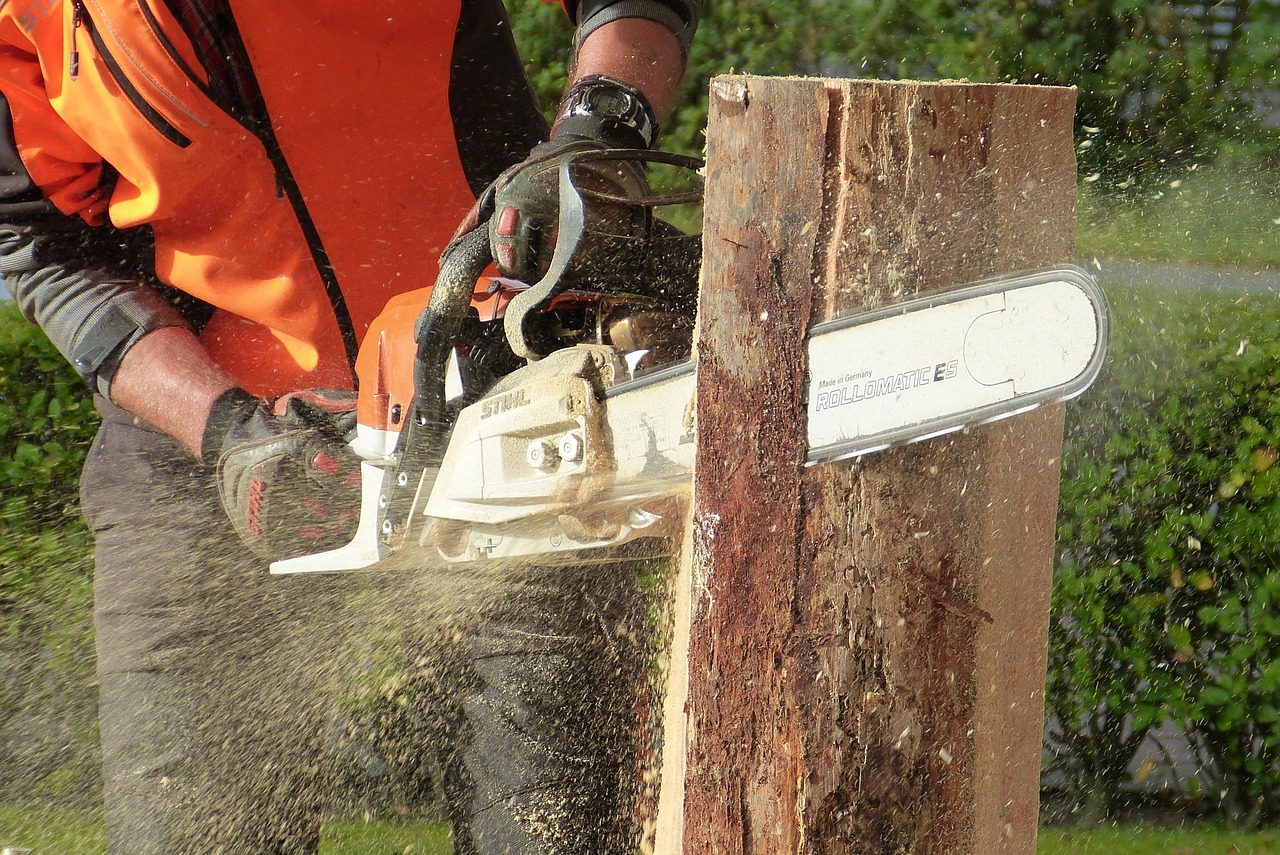The Tree Pruning Algorithm is a crucial technique in machine learning. It helps improve the performance of decision trees by removing sections of the tree that provide little predictive power. This process reduces complexity and enhances model accuracy.
Understanding Decision Trees in Machine Learning
Decision trees are a popular model used in machine learning for classification and regression tasks. They represent decisions and their possible consequences in a tree-like structure. Each internal node represents a test on an attribute, each branch represents the outcome of the test, and each leaf node represents a class label or continuous value. Their intuitive structure makes them easy to understand and interpret.

Despite their advantages, decision trees can often become too complex due to overfitting. Overfitting occurs when a model learns not only the underlying patterns but also the noise in the training data. This results in poor performance on unseen data. Tree pruning is a technique designed to combat this problem.
What is Tree Pruning?
Tree pruning refers to the process of removing parts of the tree that are not necessary for making accurate predictions. By trimming the branches, the model becomes simpler. A simpler model is easier to understand and usually performs better on new, unseen data. There are two main types of pruning: pre-pruning and post-pruning.
Pre-Pruning vs. Post-Pruning
Both pre-pruning and post-pruning aim to reduce the size of decision trees, but they do so in different ways.

- Pre-Pruning: This approach stops the tree from growing too complex during its construction. It involves setting conditions that determine when to stop splitting a node. Some common conditions include:
- Maximum depth of the tree
- Minimum number of samples required to split a node
- Minimum impurity decrease required for a split
- Post-Pruning: This technique involves allowing the tree to grow fully before removing nodes that provide little predictive power. The most common method for post-pruning is the cost-complexity pruning algorithm, which balances tree complexity against its accuracy.
Benefits of Tree Pruning
Implementing tree pruning comes with several benefits that enhance machine learning models:
- Reduces Overfitting: By simplifying the model, pruning helps prevent overfitting.
- Improves Accuracy: A pruned tree often yields better accuracy on test data.
- Enhances Interpretability: Simpler models are easier for humans to interpret and understand.
- Decreases Training Time: Pruned trees are smaller and thus require less time for training.
Common Algorithms for Tree Pruning
Several algorithms are commonly used for tree pruning in machine learning applications. These algorithms vary in their approach and methodology:
| Algorithm | Description |
|---|---|
| CART (Classification and Regression Trees) | This algorithm uses cost-complexity pruning to balance complexity and accuracy. |
| ID3 (Iterative Dichotomiser 3) | ID3 prunes trees based on information gain, often using pre-pruning techniques. |
| C4.5 | C4.5 extends ID3 by adding post-pruning capabilities to improve model performance. |
| C5.0 | C5.0 is an enhanced version of C4.5 that offers faster processing and better accuracy. |
The choice of algorithm can significantly impact the effectiveness of tree pruning. Each algorithm has its strengths and weaknesses, depending on the specific application and data characteristics.

Challenges in Tree Pruning
While tree pruning offers numerous benefits, it is not without challenges. Some difficulties encountered include:
- Tuning Parameters: Determining the optimal parameters for pruning can be complex and may require extensive experimentation.
- Loss of Information: Aggressive pruning might remove important information, leading to decreased model performance.
- Computational Complexity: Some pruning algorithms can be computationally intensive, especially with large datasets.
Despite these challenges, tree pruning remains a fundamental technique in machine learning that greatly enhances decision tree models’ performance and usability. Understanding its principles is essential for anyone looking to apply machine learning effectively.
Advanced Pruning Techniques
As machine learning continues to evolve, so do the methods for tree pruning. Advanced pruning techniques have emerged to address the limitations of traditional methods. These techniques enhance model performance while maintaining interpretability and efficiency.

Cost-Complexity Pruning
Cost-complexity pruning is one of the most widely used post-pruning techniques. It aims to minimize the total cost associated with model complexity and misclassification errors. The approach involves the following steps:
- Create a fully grown decision tree using the training data.
- Calculate the cost complexity for each subtree.
- Prune the tree iteratively by removing subtrees that yield the minimum increase in error.
This method balances the trade-off between tree size and accuracy. The key is to determine the optimal complexity parameter, often denoted by alpha (α), which controls the degree of pruning.
Reduced Error Pruning
Reduced error pruning is another effective post-pruning technique. It evaluates the impact of removing a node based on validation data. The steps involved are:
- Split the dataset into training and validation sets.
- Grow the full decision tree using the training set.
- For each internal node, temporarily remove it and check the effect on accuracy using the validation set.
- If removing the node results in better or equal accuracy, prune it from the tree.
This method is simple yet effective, as it directly assesses the impact of pruning on predictive performance.
Pruning in Random Forests
Random forests combine multiple decision trees to improve model accuracy. Pruning in random forests differs from that in individual decision trees. Since random forests already handle overfitting through ensemble learning, pruning is often less critical. However, some practitioners still apply pruning techniques for various reasons:
- Model Simplification: Pruning can help simplify individual trees within the forest, making them easier to interpret.
- Reducing Memory Usage: Smaller trees consume less memory, which can be important in resource-constrained environments.
- Improving Prediction Speed: Faster predictions can result from a smaller number of nodes in individual trees.
Feature Selection and Pruning
Feature selection plays a vital role in enhancing decision tree performance before pruning takes place. By identifying and retaining only the most relevant features, practitioners can improve both accuracy and interpretability. Techniques for feature selection include:
- Filter Methods: These methods evaluate features based on their statistical properties and remove those that do not contribute significantly to model performance.
- Wrapper Methods: These methods use a specific machine learning algorithm to evaluate subsets of features and select the best-performing combination.
- Embedded Methods: Techniques like LASSO regression incorporate feature selection as part of the model training process, promoting sparsity in feature representation.
By integrating effective feature selection with pruning techniques, model efficiency can be significantly enhanced.
Evaluation Metrics for Pruned Trees
Evaluating the performance of pruned trees is crucial for understanding their effectiveness. Various metrics can be used to assess how well a pruned tree generalizes to unseen data:
| Metric | Description |
|---|---|
| Accuracy | The proportion of true results among the total number of cases examined. |
| Precision | The ratio of correctly predicted positive observations to the total predicted positives. |
| Recall (Sensitivity) | The ratio of correctly predicted positive observations to all actual positives. |
| F1 Score | The harmonic mean of precision and recall, providing a balance between the two metrics. |
| AUC-ROC | The area under the receiver operating characteristic curve; it represents model discrimination ability. |
Selecting appropriate evaluation metrics depends on the specific application and context. For instance, in medical diagnosis, recall may be prioritized over precision to minimize false negatives.
Implementing Tree Pruning in Practice
When implementing tree pruning techniques in practice, several considerations come into play:
- Selecting the Right Tool: Different programming libraries offer various options for tree pruning. Popular libraries include scikit-learn in Python and rpart in R.
- Cross-Validation: Utilize cross-validation to assess model performance accurately. This helps prevent overfitting during model evaluation.
- Tuning Hyperparameters: Experiment with different hyperparameters related to pruning techniques to find the optimal settings for specific datasets.
The practical implementation of tree pruning requires careful attention to detail. By following best practices, practitioners can enhance their models’ performance significantly.
Real-World Applications of Tree Pruning
Tree pruning algorithms have a wide range of applications across various domains in machine learning. Understanding how these techniques can be applied in real-world scenarios helps illustrate their importance and utility.
Healthcare and Medical Diagnosis
In healthcare, decision trees are often used for diagnosing diseases based on patient symptoms and medical history. Pruning can significantly improve the accuracy of these models. For instance, a pruned decision tree can help doctors make more reliable diagnoses by focusing only on the most relevant factors.
Some specific applications include:
- Disease Prediction: Pruned models can be used to predict the likelihood of diseases such as diabetes or heart disease based on patient data.
- Treatment Recommendations: Decision trees can assist in recommending treatments by analyzing patient responses to previous therapies.
- Risk Assessment: Healthcare providers use pruned trees to assess patient risk factors and develop preventive care strategies.
Finance and Credit Scoring
The finance industry widely utilizes tree pruning in credit scoring models. By effectively combining various financial indicators, pruned decision trees can predict a borrower’s likelihood of defaulting on loans. This application is critical for minimizing financial risks.
Key uses in finance include:
- Loan Approval Decisions: Pruned trees help banks quickly evaluate loan applications by focusing on critical factors such as credit history and income level.
- Fraud Detection: Decision trees can identify unusual patterns in transaction data, aiding in the detection of fraudulent activity.
- Portfolio Management: Pruning can optimize investment strategies by pinpointing key market signals that influence asset performance.
Retail and Customer Segmentation
In the retail sector, understanding customer behavior is vital for tailoring marketing strategies. Decision trees, when pruned, allow businesses to segment their customers effectively based on purchasing patterns and preferences.
Applications in retail include:
- Targeted Marketing: Businesses can create targeted marketing campaigns by identifying key customer segments through pruned decision trees.
- Inventory Management: Pruning helps predict product demand, allowing retailers to manage inventory more efficiently.
- Customer Retention: Analyzing customer interactions through decision trees helps identify factors leading to customer churn, enabling proactive retention strategies.
Integration with Other Machine Learning Techniques
Tree pruning does not operate in isolation; it can be effectively integrated with other machine learning techniques to enhance overall model performance. Here are some ways to achieve this integration:
Ensemble Methods
Ensemble methods, such as boosting and bagging, combine multiple models to improve prediction accuracy. Pruned decision trees can serve as base learners in these ensemble methods, leveraging their simplicity and interpretability.
- Boosting: Techniques like AdaBoost can utilize pruned trees to create strong predictive models by focusing on misclassified instances from previous iterations.
- Bagging: In methods like Random Forests, individual trees are pruned to reduce variance while maintaining diversity among the ensemble members.
Hybrid Models
Combining decision trees with other algorithms can lead to improved performance. For example, using a decision tree in conjunction with neural networks allows for capturing complex relationships while benefiting from the interpretability of trees.
- Decision Tree + Neural Networks: This hybrid approach can leverage the strengths of both models—decision trees for interpretability and neural networks for handling non-linear relationships.
- Decision Tree + Support Vector Machines (SVM): Combining these techniques allows for effective classification while maintaining decision tree transparency.
Future Trends in Tree Pruning
The landscape of machine learning is continuously evolving, and so are the techniques related to tree pruning. Several trends are emerging that will likely shape the future of tree pruning algorithms:
Automated Hyperparameter Tuning
The use of automated hyperparameter tuning methods, such as grid search and Bayesian optimization, will become increasingly important. These methods streamline the process of identifying optimal parameters for pruning algorithms, making them more accessible to practitioners.
Incorporation of Deep Learning Techniques
The integration of deep learning techniques with tree pruning is an exciting area of research. As deep learning models become more prevalent, finding ways to combine their predictive power with the interpretability of decision trees will be crucial.
Explainable AI (XAI)
The demand for explainable AI continues to grow, especially in regulated industries like healthcare and finance. Enhanced tree pruning techniques that improve model transparency will be essential for fostering trust and understanding among users and stakeholders.
Conclusion of Current Section
The practical implementation of tree pruning techniques is vital across various industries. By integrating advanced methods and exploring new trends, practitioners can significantly enhance their machine learning models’ effectiveness and interpretability.
Future Directions for Research in Tree Pruning
As we look toward the future, research in tree pruning algorithms continues to evolve. Several promising avenues are emerging that could significantly enhance the effectiveness and application of pruning techniques in machine learning.
Adaptive Pruning Techniques
Adaptive pruning techniques are gaining attention as they allow models to dynamically adjust their pruning strategies based on data characteristics. This approach can lead to more efficient models that maintain high accuracy without overfitting. Key aspects to explore include:
- Data-Driven Adaptation: Algorithms that adaptively prune based on real-time performance metrics could optimize model accuracy continuously.
- Contextual Pruning: Developing pruning methods that consider the context or environment in which the model operates could improve decision-making processes, especially in dynamic fields like finance and healthcare.
Integration with Reinforcement Learning
Reinforcement learning (RL) offers a framework for decision-making that could complement tree pruning methods. By combining RL with decision trees, researchers can explore how pruning can be optimized based on feedback from the environment. This integration may allow for:
- Feedback Loops: Implementing feedback mechanisms to continually refine pruning strategies based on outcomes.
- Dynamic Decision Making: Creating models that adjust their pruning strategies based on changing conditions, improving adaptability and robustness.
Best Practices for Practitioners
For practitioners looking to implement tree pruning techniques effectively, adherence to best practices is crucial. Here are some recommendations to ensure successful outcomes:
- Understand Your Data: A thorough understanding of the dataset and its characteristics is essential before applying pruning techniques. This understanding aids in selecting appropriate methods and parameters.
- Utilize Cross-Validation: Employ cross-validation techniques to assess model performance accurately. This practice helps prevent overfitting and ensures robust evaluations.
- Monitor Model Performance: Continuously monitor the performance of pruned models during deployment to catch any degradation in accuracy. Regular assessments allow for timely adjustments.
- Stay Informed on Advances: Keeping abreast of new developments in machine learning and tree pruning techniques ensures that practitioners remain competitive and effective.
Final Thoughts
The tree pruning algorithm is a powerful tool in the machine learning toolkit, offering significant advantages in terms of model performance and interpretability. From healthcare to finance, its applications are vast and impactful. As technology continues to advance, integrating tree pruning with other cutting-edge methodologies will likely enhance its effectiveness further.
The future of tree pruning lies in its adaptability and integration with emerging technologies such as deep learning, reinforcement learning, and explainable AI. By embracing these advancements and adhering to best practices, practitioners can ensure they are equipped to tackle complex challenges in machine learning.
Overall, tree pruning is not merely a technical process; it represents a fundamental approach to creating more efficient, accurate, and interpretable machine learning models. As we continue to explore this field, ongoing research and development will undoubtedly lead to exciting innovations that enhance the power of decision trees and their applications across various domains.
In conclusion, understanding tree pruning algorithms is essential for anyone involved in machine learning. By leveraging these techniques effectively, practitioners can unlock new levels of performance and insight from their models.
